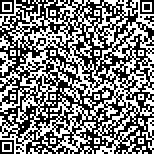Archive > Volume 47 Issue 8 > 2021,47(8):995-1008. DOI:10.7519/j.issn.1000-0526.2021.08.007 Prev Next
Application of Lightning Data to High-Resolution Rapid Refresh Assimilation System
- Article
- Figures
- Metrics
- Preview PDF
- Reference
- Related
- Cited by
- Materials
Abstract:
For a further study on the usage of active divectory topology diagrammer (ADTD) lightning data in rapid refresh assimilation system, this paper introduces a new relationship between lightning activity and radar echo characteristics in Central China to calculate lightning-proxy reflectivity and conducts three sets of numerical experiments to analyze a severe weather process that occurred in Jianli, Hubei Province on 1 June 2015. The influence of lightning data on radar reflectivity, cloud microphysical variables and precipitation forecast calculated by rapid refresh assimilation system is mainly analyzed and compared with the direct assimilation of radar reflectivity. Results are as follows. The ADTD lightning data can capture the heavy precipitation signal well. The assimilation of lightning-proxy reflectivity of new relationship can improve the precipitation forecast skill by adjusting the cloud microphysical variables. By comparing the results of precipitation, we find that after adding lightning-proxy reflectivity obtained by the new relationship, the missing report rate can be effectively reduced, and the model can respond to the precipitation forecast that is more closely to the observation in a short-time scale. Moreover, it can improve the accuracy of short-term prediction and achieve similar results to the direct assimilation of radar reflectivity.
Keywords:
Project Supported:
Clc Number:


Mobile website









